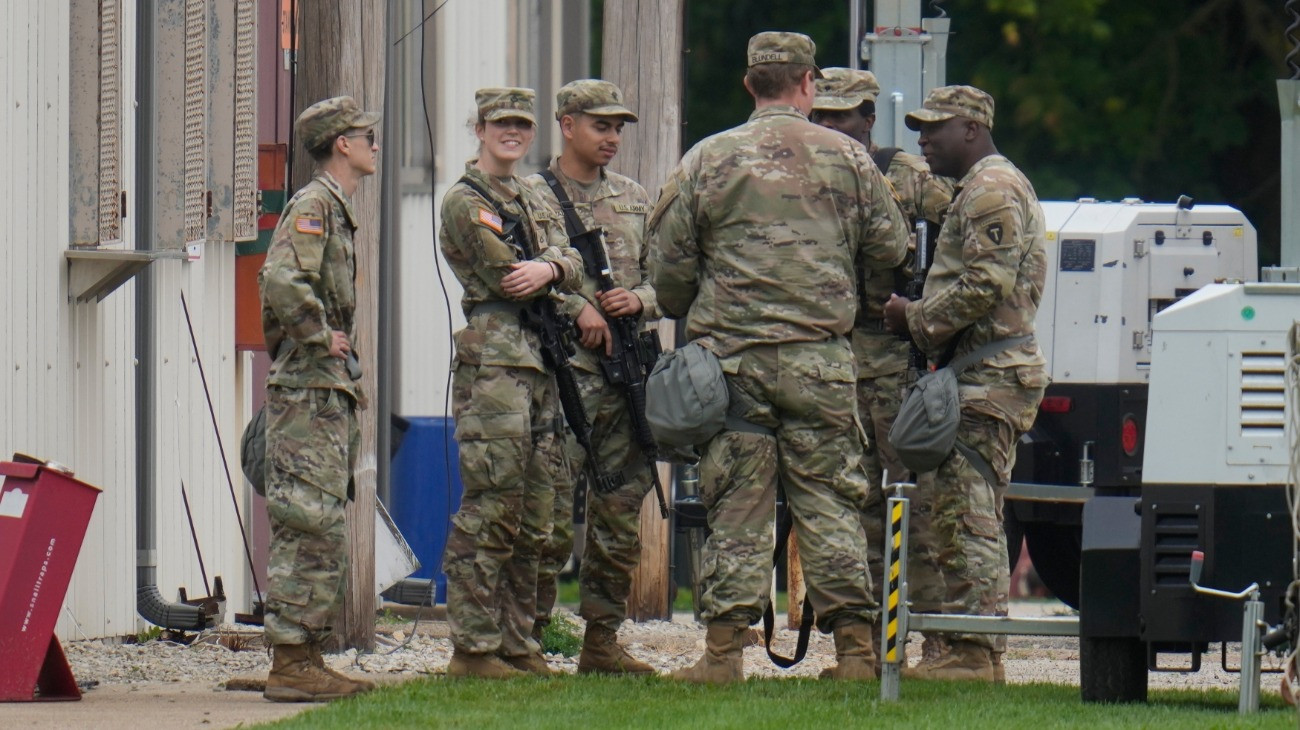A bevetés annak ellenére indult meg, hogy Chicago és Illinois vezetése is pert indított az elnök ellen a tervezett katonai akció miatt
A The Guardian beszámolója szerint Chicago már az elmúlt hetekben is fokozott bevándorlási ellenőrzésekkel szembesült, valamint erőszakos összecsapások történtek Broadview külvárosában, ahol a rendfenntartók könnygázt és paprika sprayt vetettek be tüntetők ellen – írja a Portfolio.
Mint olvasható, a katonai misszió azután indult meg, hogy April Perry szövetségi bíró elutasította a csapatok azonnali kitiltását a városból, miközben Illinois állam és Chicago városa által a Trump-adminisztráció ellen indított per folyamatban van.
Kwame Raoul, Illinois főügyésze hétfőn nyújtotta be a keresetet, hogy megakadályozza Trumpot az állami nemzeti gárda bevetésében vagy más államokból, például Texasból érkező csapatok küldésében. A bírói döntést követően azonban a csapatokat hétfőn mozgósították, és több hírforrás is megerősítette, hogy kedden már Chicago térségében tartózkodtak.
Brandon Johnson, Chicago polgármestere végrehajtási rendeletet írt alá, amely megtiltja a Bevándorlási és Vámügyi Hivatal (ICE) ügynökeinek, hogy a város tulajdonában lévő ingatlanokon működjenek. Ez a harmadik végrehajtási rendelet, amely az ICE ügynökök hatáskörét próbálja korlátozni a városban, amióta Trump először jelezte a bevetést.
A Fehér Ház azzal vádolta a polgármestert, hogy
„bűnrészes az illegális bevándorló gyilkosok, erőszaktevők, emberkereskedők és bandatagok segítésében”.
Illinois tisztviselői régóta elítélik a Trump-adminisztráció szövetségi beavatkozási terveit. Pritzker kormányzó korábban arra szólított fel mindenkit, hogy „álljanak ki” Trumppal szemben, és kijelentette: „mindent megteszek, hogy megakadályozzam az emberek jogainak elvételét és a katonaság bevetését az államok ellen”.
Trump nemrég Portlandben is gárdistákat akart bevetni, de egy szövetségi bíró vasárnap blokkolta ezt a kísérletét. Júniusban a Trump-adminisztráció nemzeti gárda csapatokat vetett be Los Angelesben, ahol az ICE ügynökök nagyszabású razziákat hajtottak végre. Trump augusztusban több ezer nemzeti gárda katonát és szövetségi ügynököt küldött Washingtonba is.
Trump a több várost érintő katonai akciót hivatalosan a magas bűnözéssel és az illegális bevándorlás elleni keményebb fellépéssel indokolja.

